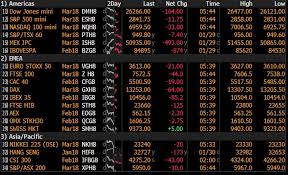This Little Noticed S&P Index Is Up 25% This Year—and Offers a Hedge Against Wild Market Swings

A durable piece of conventional wisdom holds that stocks that carry higher risk also reward their shareholders with higher returns. But as 2019 unfolds, that notion is looking, at least in some respects, more questionable.
After several months of placid, steady stock gains, U.S. stocks endured a choppy market this summer. For the past four months, the S&P 500 has largely trended sideways (it opened May at 2,952 and closed August at 2,926), even as it swung erratically: closing up one day, tumbling the next. The trend grew especially pronounced in August, thanks to uncertainty over trade disputes and the prospect of a global recession.
While such volatility may offer opportunities for seasoned stock pickers, it can be nerve-racking for buy-and-hold investors overseeing their savings. The S&P 500, that stalwart stock index mirrored by some of the most popular ETFs and index funds in the world, may be up 19% so far this year, but it’s down 1% since the end of June.
Meanwhile, some of the traditionally tried-and-true safe havens are falling short as well. Vanguard’s High-Dividend Yield fund, with $ 34 billion in net assets, is up 13% this year—not bad but still a relative under-performer. And Vanguard’s Value ETF, with $ 80 billion in net assets, is up 12% this year, according to Yahoo Finance.
So how do investors seek out relatively strong returns in a period of stock-market stagnation as well as declining bond returns? There is one poorly lit corner of the U.S. stock market that has quietly performed well this year. In fact, according to S&P Dow Jones Indices, it’s the best performing group of stocks it tracks: Low-volatility stocks.
Sure, it sounds boring. Volatility is exciting and potentially profitable for shrewd options investors. Low volatility is the province of aging companies in not-so-cool industries. If volatility grabs the headlines, low volatility toils in obscurity. And yet it’s those same low-volatility stocks that are grabbing the higher returns this year.
“It’s definitely the best performing factor this year,” says Craig Lazzara, managing director of index investing strategy at S&P Dow Jones Indices. (“Factor” is a Wall Street term for an aspect of a stock often favored by traders—such as high-dividend, momentum, or value—which are often used to structure ETFs and index funds.) Low-volatility stocks tracked by S&P are up 25% so far this year and up 5% since June 30.
Such an outperformance can simply be a short-term aberration, but Lazzara and his colleagues believe it may represent a more widespread and longer-term trend that the market has yet to fully appreciate. S&P introduced its Low-Volatility Index in 2011, measuring the average daily volatility of each S&P 500 component and then recalibrating the index, every three months, to comprise the least volatile 100 of the bunch.
The investment premise behind low-volatility stocks is deceptively simple: Stocks that have been stable in recent months will remain stable in the future. Currently, utilities make up 28% of S&P’s Low Volatility Index, including Duke Energy and Entergy. Financials such as US Bancorp and Chubb make up another 21%. And real estate stocks such as AvalonBay and UDR comprise another 20%.
Earlier this year, S&P Dow Jones retroactively calculated how the low-volatility factor would have performed in earlier stock-market eras, going back to the early 1970s. And the results were also surprising. The average, theoretical return on a low-volatility index still would have outperformed the broader S&P 500 Index overall since 1972.
That’s not to say low-volatility stocks would have performed well every single year. In 2013, for example, the S&P 500 Index rose 32%, while the low-volatility component lagged behind. But overall, Lazzara says, low-volatility stocks have often been among the quiet outperformers in the stock market.
The reason, Lazzara says, has to do with how investors respond to a selloff versus how they act during a rally. During a bull market, the difference between the best-performing and worst-performing stocks is relatively muted. During sell-offs and bear markets, however, the gap between the best and worst stocks grows much wider.
In other words, investing in low-volatility stocks may cause you to lag the overall market in good times, but that’s more than made up for by protection from the turbulence of down markets. “The amount of under-performance that you rack up when the market’s up is more than offset by the amount of outperformance you rack up when the market’s down,” Lazzara says.
Such a defense-first approach may be counter-intuitive to investors who know well the anguish of sitting out a bull market because of an over-abundance of caution. But in uncertain markets, it can pay off. “If you’re interested in a defensive strategy, this is one that has demonstrated its ability to deliver every time,” Lazzara says.
In a market where outperformance seems to be increasingly harder to find, investing in low-volatility stocks seems to make basic sense. A 2010 paper by researchers at Harvard and NYU asserted that “the long-term outperformance of low risk portfolios is perhaps the greatest anomaly in finance… It challenges the basic notion of a risk-return tradeoff.”
Nearly a decade later, low volatility remains something of a curious market anomaly. In theory, higher risk should bring higher reward. But that truism grows more complicated once investor emotions like fear come into play. In bear markets, holding a defensive portfolio of unglamorous, slow-but-steady stocks can act as a buffer to such emotion-driven trading.
“One of the worst investor mistakes is giving up at the wrong time, selling just when the market is starting to go back up,” Lazzara says. “Defensive factors like low-volatility stocks make it easier for the investor to not do the wrong thing.”
More must-read stories from Fortune:
—A rare tech company where women dominate
—Why WeWork won’t be in the S&P 500 after its IPO
—Is it “only human” to feel anxious about money? Talking finance with Sophia the Robot
—Europe’s cyber watchdog for banks has a problem—it keeps getting hacked
—Listen to our audio briefing, Fortune 500 Daily


